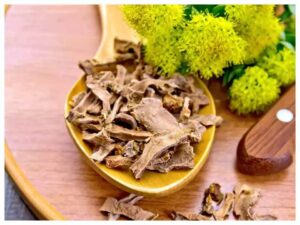The Mysterious Discovery of Sage Herb
Unraveling the Mysteries of Sage’s Origins
The origins of the Sage herb (Salvia officinalis) are shrouded in mystery and conjecture, with conflicting stories and legends abounding. It is a perennial herb of the Lamiaceae family, and its leaves have been used for centuries for culinary, medicinal, and spiritual purposes. In this article, we will explore the possible origins of this fascinating plant and the stories that surround it.
The Ancient Greeks and Romans
Sage has been in use since ancient times, and the Greeks and Romans were among the first to use it for medicinal purposes. The Greeks called the plant “salvia” or “savia,” which means “to save” or “to heal.” According to Greek legend, the god Zeus was so taken with the herb’s healing properties that he granted it immortality. The Romans also valued Sage and believed it to be a sacred herb, using it in their religious ceremonies and festivals.
Sage in the Middle Ages
During the Middle Ages, Sage became a popular medicinal herb in Europe, with many herbalists extolling its virtues as a cure for a range of ailments. It was also used as a culinary herb and was believed to have the power to ward off evil spirits. The famous 14th-century herbalist, John Gerard, wrote in his book “Herball” that Sage was good for “digestion of meats, it quickeneth the senses and memory, strengtheneth the sinews, restoreth health to those that have the palsy, and taketh away shakey trembling of the members.”
Sage in Traditional Medicine
In traditional medicine, Sage has been used for a wide range of conditions, including sore throats, coughs, indigestion, hot flashes, and memory loss. It has also been used as a natural remedy for menstrual cramps and as an aid to digestion. In many cultures, Sage is believed to have spiritual properties, and it is used in rituals to cleanse and purify the mind, body, and spirit.
Theories on Sage’s Origin
There are several theories on the origin of Sage, but none can be proven conclusively. Some believe that the plant originated in the Mediterranean region, while others think it came from the Middle East. It is possible that Sage was first discovered in the wild and later cultivated for its medicinal and culinary uses. However, the precise details of its discovery remain a mystery.
Sage in Modern Times
Today, Sage continues to be a popular herb, with many people using it for its health benefits and culinary properties. It is often used in Italian and Mediterranean cuisine and pairs well with meats, vegetables, and cheeses. Sage tea is also a popular beverage and is said to have a calming effect on the mind and body.
Conclusion
The discovery of Sage is shrouded in mystery and legend, and its origins may never be known with certainty. What is certain is that this herb has been valued for its culinary and medicinal properties for centuries, and it continues to be a popular herb today. Whether used as a seasoning in the kitchen or as a natural remedy for various ailments, Sage remains a beloved and fascinating plant that continues to intrigue and inspire.

The Surprising Health Benefits of Sage Herb
Antioxidant Properties
Sage is a rich source of antioxidants, which are compounds that protect the body from damage caused by free radicals. Free radicals are unstable molecules that can cause cellular damage and contribute to the development of chronic diseases, such as cancer and heart disease. The antioxidants in Sage help neutralize these free radicals, reducing the risk of oxidative stress.
Anti-Inflammatory Properties
Sage also has potent anti-inflammatory properties, which can help reduce inflammation throughout the body. Inflammation is a natural response to injury or infection, but chronic inflammation can contribute to the development of chronic diseases, such as arthritis, heart disease, and diabetes. Sage contains compounds that inhibit the production of inflammatory molecules, reducing inflammation and promoting healing.
Digestive Health
Sage has long been used as a natural remedy for digestive issues. It is believed to stimulate the digestive system, promoting the production of digestive enzymes and bile. Sage also has anti-spasmodic properties, which can help relieve cramping and bloating. Additionally, Sage has been shown to have antibacterial properties, which can help eliminate harmful bacteria in the gut.
Oral Health
Sage has been used for centuries as a natural remedy for oral health issues. It has antibacterial properties that can help eliminate harmful bacteria in the mouth, reducing the risk of cavities and gum disease. Sage can also help freshen breath and soothe sore throats.
Menopause Symptoms
Sage has been found to be effective in reducing the symptoms of menopause. Menopause is a natural transition that occurs in women as they age, but it can cause uncomfortable symptoms, such as hot flashes, night sweats, and mood swings. Sage contains compounds that mimic the effects of estrogen, reducing the severity and frequency of menopause symptoms.
Cognitive Function
Sage has been shown to have positive effects on cognitive function, particularly memory. It is believed that Sage contains compounds that can increase the production of acetylcholine, a neurotransmitter that plays a role in memory and learning. Additionally, Sage has been shown to have anti-inflammatory properties, which can reduce inflammation in the brain and promote healthy cognitive function.
Diabetes
Sage has been found to be beneficial for people with diabetes. It has been shown to reduce blood sugar levels and improve insulin sensitivity. Additionally, Sage contains compounds that can reduce inflammation, which is a risk factor for the development of diabetes and its complications.
Skin Health
Sage has been used for centuries as a natural remedy for skin issues. It has antibacterial and anti-inflammatory properties that can help soothe and heal the skin. Sage can also help reduce the appearance of fine lines and wrinkles, as it contains antioxidants that protect the skin from damage caused by free radicals.
Immune System
Sage has immune-boosting properties that can help strengthen the body’s natural defenses. It contains compounds that can stimulate the production of white blood cells, which are responsible for fighting off infections and disease. Additionally, Sage has antibacterial and antiviral properties that can help protect the body from harmful pathogens.
Cardiovascular Health
Sage has been found to be beneficial for cardiovascular health. It can help reduce blood pressure and cholesterol levels, reducing the risk of heart disease. Sage contains compounds that help relax blood vessels, reducing resistance and improving blood flow. It also contains antioxidants that protect the heart from damage caused by free radicals.
Cancer Prevention
Sage has been shown to have anti-cancer properties, although more research is needed to fully understand its potential in this area. Some studies have found that Sage can inhibit the growth of cancer cells and induce apoptosis, or programmed cell death, in cancer cells. Additionally, Sage contains antioxidants that protect the body from damage caused by free radicals, which can contribute to the development of cancer.
Conclusion
Sage is a fascinating herb with a rich history and a wide range of health benefits. Its antioxidant, anti-inflammatory, and immune-boosting properties make it a valuable addition to any wellness regimen. Whether used in cooking, as a natural remedy, or in supplement form, Sage has the potential to promote health and wellbeing in a variety of ways.

The Nutritional Components and Core Ingredients of Sage
Unraveling the Mysteries of Sage’s Unique Properties
Sage (Salvia officinalis) is a popular herb that is used in cooking and has been used for centuries for its medicinal properties. It is a member of the mint family and is native to the Mediterranean region. Sage has a distinctive aroma and flavor and is commonly used in savory dishes. In this article, we will explore the nutritional components and core ingredients of Sage, and how they contribute to its unique properties.
Nutritional Components
Sage is a rich source of several important vitamins and minerals. One tablespoon of fresh Sage leaves (approx. 3 grams) contains:
- Vitamin K: 21.8 mcg (27% of the Daily Value)
- Vitamin A: 57.4 IU (1% of the Daily Value)
- Calcium: 30.9 mg (3% of the Daily Value)
- Iron: 0.6 mg (3% of the Daily Value)
- Manganese: 0.1 mg (3% of the Daily Value)
While these amounts may seem small, they can add up quickly when Sage is used in larger quantities or consumed regularly. Additionally, Sage contains several unique compounds that contribute to its health benefits.
Core Ingredients
Sage contains several core ingredients that give it its distinctive flavor and aroma, as well as its medicinal properties. These include:
1. Essential Oils
Sage contains several essential oils that contribute to its flavor and aroma. The most important of these is thujone, which has been found to have anti-inflammatory and antioxidant properties. Other essential oils found in Sage include camphor, cineole, and borneol.
2. Flavonoids
Sage contains several flavonoids, which are compounds that have been found to have anti-inflammatory and antioxidant properties. The most important of these are apigenin, luteolin, and diosmetin.
3. Rosmarinic Acid
Rosmarinic acid is a polyphenol found in Sage that has been found to have anti-inflammatory and antioxidant properties. It is also believed to have antibacterial and antiviral properties, making it a valuable component of the herb’s medicinal properties.
4. Triterpenes
Sage contains several triterpenes, which are compounds that have been found to have anti-inflammatory and anti-cancer properties. The most important of these are ursolic acid and oleanolic acid.
Methods for Consuming Sage
Cooking with Sage
Cooking with Sage is one of the most popular ways to enjoy the herb’s unique flavor and nutrition. Here are some tips for incorporating Sage into your cooking:
1. Fresh Sage Leaves
Fresh Sage leaves are the most flavorful and nutritious way to use Sage in your cooking. You can chop fresh Sage leaves and add them to soups, stews, and pasta dishes, or use them to season meats, vegetables, and grains. Fresh Sage leaves can also be used to make Sage butter or Sage pesto.
2. Dried Sage
Dried Sage is a convenient way to add Sage’s flavor and nutrition to your cooking. Dried Sage is available in most grocery stores and can be used in the same way as fresh Sage leaves. However, dried Sage is more potent than fresh Sage, so you may need to use less of it.
3. Sage Oil
Sage oil is made by infusing Sage leaves in oil, such as olive oil or grapeseed oil. Sage oil can be used as a flavorful and healthy alternative to other oils in your cooking. It can also be used as a salad dressing or dipping oil.
4. Sage Tea
Sage tea is a simple and effective way to enjoy the health benefits of Sage. To make Sage tea, steep fresh or dried Sage leaves in hot water for several minutes. Sage tea can be sweetened with honey or lemon, or enjoyed plain.
Using Sage as a Natural Remedy
Sage has a long history of use as a natural remedy for a variety of health issues. Here are some ways to use Sage as a natural remedy:
1. Sage Mouthwash
Sage mouthwash is a natural remedy for oral health issues, such as bad breath and gum disease. To make Sage mouthwash, steep fresh or dried Sage leaves in hot water for several minutes. Strain the liquid and use it as a mouthwash, swishing it around in your mouth for several seconds before spitting it out.
2. Sage Inhalation
Sage inhalation can help relieve congestion and respiratory issues. To do a Sage inhalation, place a handful of fresh Sage leaves in a bowl and pour hot water over them. Lean over the bowl and inhale the steam, covering your head with a towel if necessary.
3. Sage Bath
Sage bath can help soothe sore muscles and relieve stress. To make a Sage bath, steep fresh or dried Sage leaves in hot water for several minutes. Strain the liquid and add it to a warm bath.
Sage Supplements
Sage supplements are available in capsule or liquid form. These can be a convenient way to ensure you are getting a consistent dose of Sage’s active compounds. However, it is important to choose a high-quality supplement from a reputable manufacturer to ensure its effectiveness and safety.
Precautions and Side Effects
While Sage is generally considered safe, there are some precautions to keep in mind. Here are some things to consider:
- Allergies: Some people may be allergic to Sage, particularly those with allergies to other members of the mint family.
- Pregnancy and breastfeeding: Sage should be used with caution during pregnancy and breastfeeding, as it can have an effect on hormone levels.
- Medications: Sage can interact with certain medications, including blood thinners and diabetes medications. If you are taking any medications, it is important to talk to your doctor before using Sage.
Additionally, it is important to use Sage in moderation, as excessive consumption can cause side effects such as dizziness, tremors, and seizures. It is recommended to limit Sage consumption to no more than 3-4 grams per day.
Potential Side Effects and When to Avoid Taking Sage
Understanding the Risks and Precautions of Sage Consumption
Sage (Salvia officinalis) is a popular herb that has been used for centuries for its medicinal properties. It is a member of the mint family and is native to the Mediterranean region. Sage has a distinctive aroma and flavor and is commonly used in cooking. However, like any herb or supplement, there are potential side effects and risks associated with Sage consumption. In this article, we will explore the potential side effects of Sage and when to avoid taking it.
Potential Side Effects
While Sage is generally considered safe, there are some potential side effects to be aware of. Here are some of the most common:
- Allergic Reactions
Some people may be allergic to Sage, particularly those with allergies to other members of the mint family. Symptoms of an allergic reaction can include itching, swelling, and difficulty breathing. If you experience any of these symptoms after consuming Sage, stop using it immediately and seek medical attention.
- Hormone Effects
Sage contains compounds that can affect hormone levels in the body. While this can be beneficial for some conditions, such as menopause symptoms, it can also be harmful for others. Pregnant or breastfeeding women should avoid using Sage, as it can affect hormone levels and potentially harm the developing fetus or infant. Additionally, people with hormone-sensitive conditions, such as breast or uterine cancer, should avoid using Sage.
- Blood Sugar Effects
Sage has been found to lower blood sugar levels in some people. While this can be beneficial for people with diabetes, it can also be harmful for others. People who are taking medications that lower blood sugar, such as insulin, should use Sage with caution, as it can increase the risk of hypoglycemia, or low blood sugar.
- Neurological Effects
Sage contains compounds that can affect the nervous system. While this can be beneficial for some conditions, such as memory loss, it can also be harmful for others. Excessive Sage consumption can cause side effects such as dizziness, tremors, and seizures. People with neurological conditions, such as epilepsy, should avoid using Sage.
- Gastrointestinal Effects
Sage can cause gastrointestinal side effects in some people. Excessive consumption can cause nausea, vomiting, and diarrhea. Additionally, people with gastrointestinal conditions, such as ulcerative colitis, should use Sage with caution, as it can irritate the digestive system.
When to Avoid Taking Sage
While Sage can be a valuable addition to any wellness regimen, there are some situations in which it should be avoided. Here are some of the most common:
- Pregnancy and Breastfeeding
Sage should be avoided during pregnancy and breastfeeding, as it can affect hormone levels and potentially harm the developing fetus or infant. Additionally, Sage can cause uterine contractions, which can increase the risk of miscarriage or preterm labor.
- Hormone-Sensitive Conditions
Sage should be avoided by people with hormone-sensitive conditions, such as breast or uterine cancer. Sage contains compounds that can affect hormone levels in the body, potentially worsening these conditions.
- Blood Sugar Disorders
Sage should be used with caution by people with blood sugar disorders, such as diabetes. While Sage can help lower blood sugar levels, excessive consumption can increase the risk of hypoglycemia, or low blood sugar.
- Neurological Conditions
Sage should be avoided by people with neurological conditions, such as epilepsy. Excessive Sage consumption can cause side effects such as dizziness, tremors, and seizures.
- Gastrointestinal Conditions
Sage should be used with caution by people with gastrointestinal conditions, such as ulcerative colitis. Sage can irritate the digestive system and cause gastrointestinal side effects such as nausea, vomiting, and diarrhea.
Precautions for Safe Sage Consumption
To minimize the risk of side effects and ensure safe Sage consumption, here are some precautions to keep in mind:
- Use Sage in Moderation
While Sage can be beneficial for health, excessive consumption can cause side effects. It is recommended to limit Sage consumption to no more than 3-4 grams per day.
- Choose High-Quality Sage Products
When using Sage supplements or products, it is important to choose high-quality products from reputable manufacturers. Look for products that have been independently tested for purity and potency.
- Talk to Your Doctor
If you have any underlying health conditions or are taking medications, it is important to talk to your doctor before using Sage. Sage can interact with certain medications and may not be safe for people with certain health conditions.
- Pay Attention to Your Body
If you experience any side effects after consuming Sage, such as nausea, vomiting, or dizziness, stop using it immediately and seek medical attention. Additionally, if you have any concerns about Sage consumption, talk to your healthcare provider.
Conclusion
Sage is a popular herb that offers a range of health benefits. However, like any herb or supplement, there are potential side effects and risks associated with Sage consumption. To ensure safe Sage consumption, it is important to use Sage in moderation, choose high-quality products, talk to your doctor, and pay attention to your body. With these precautions in mind, Sage can be a valuable addition to any wellness regimen, offering a delicious and nutritious way to promote overall health and wellbeing.






